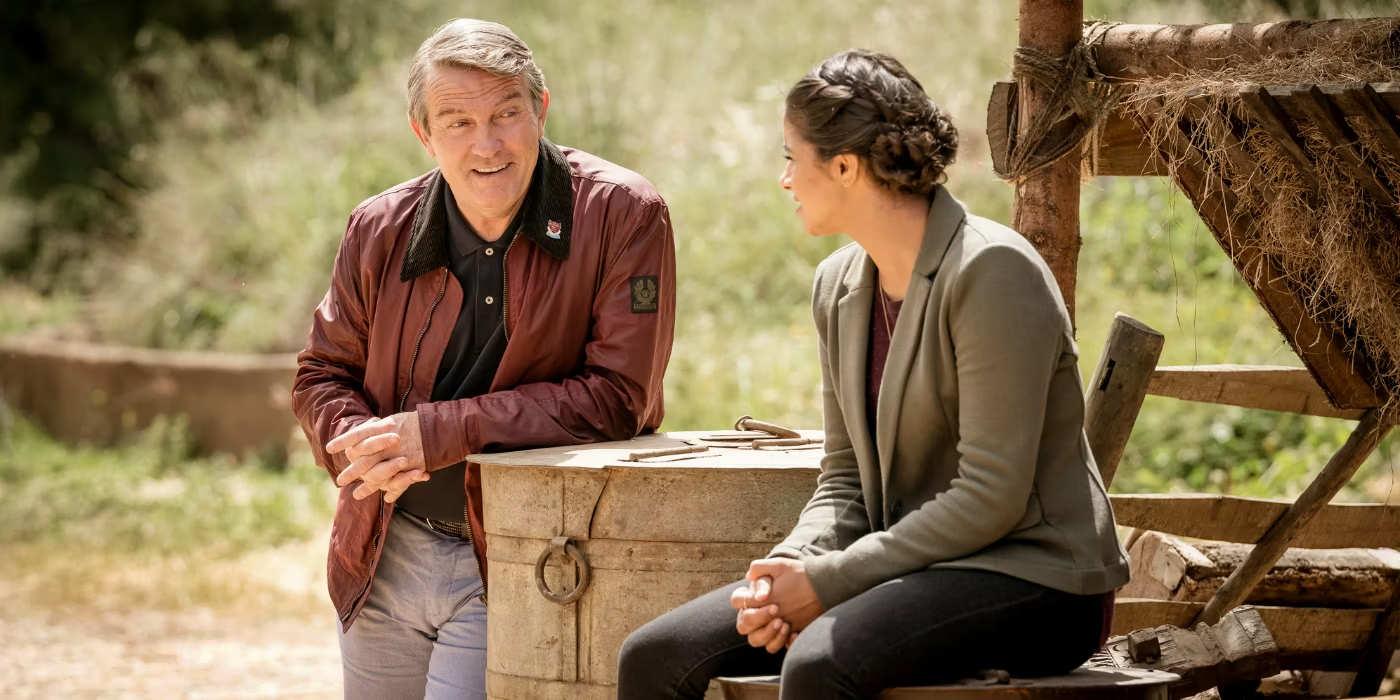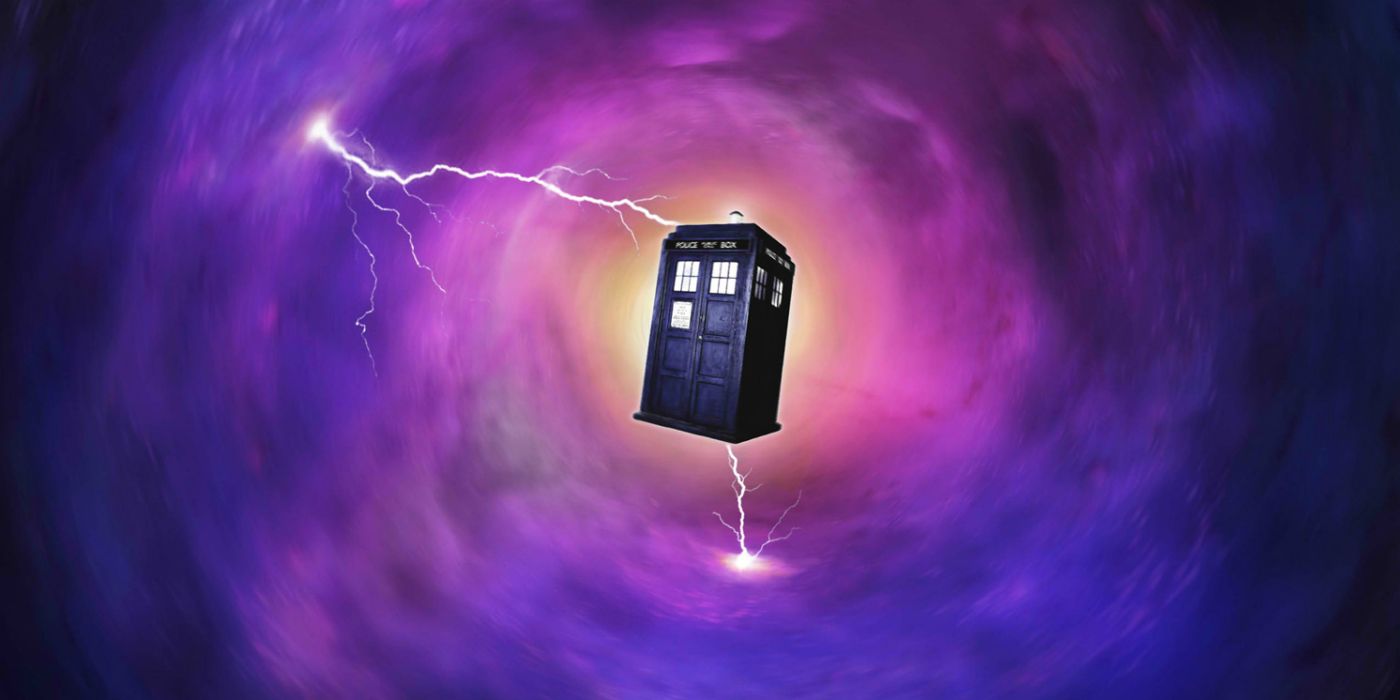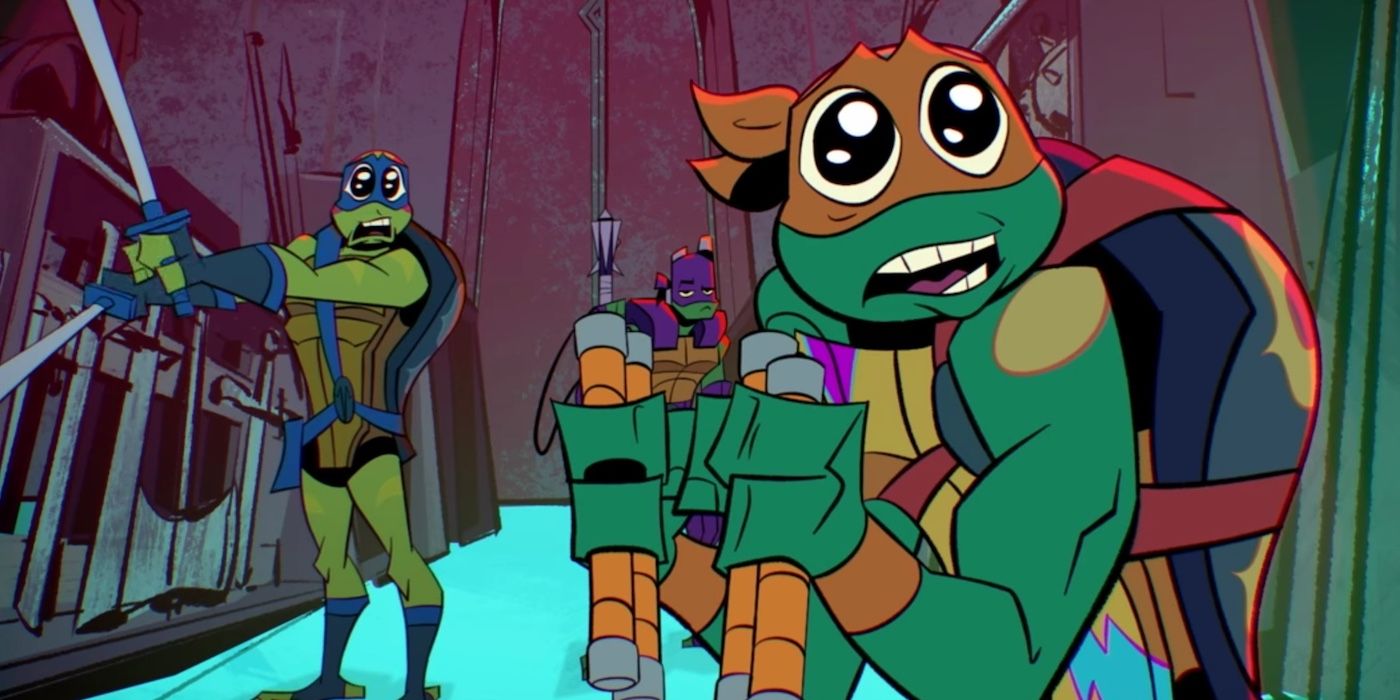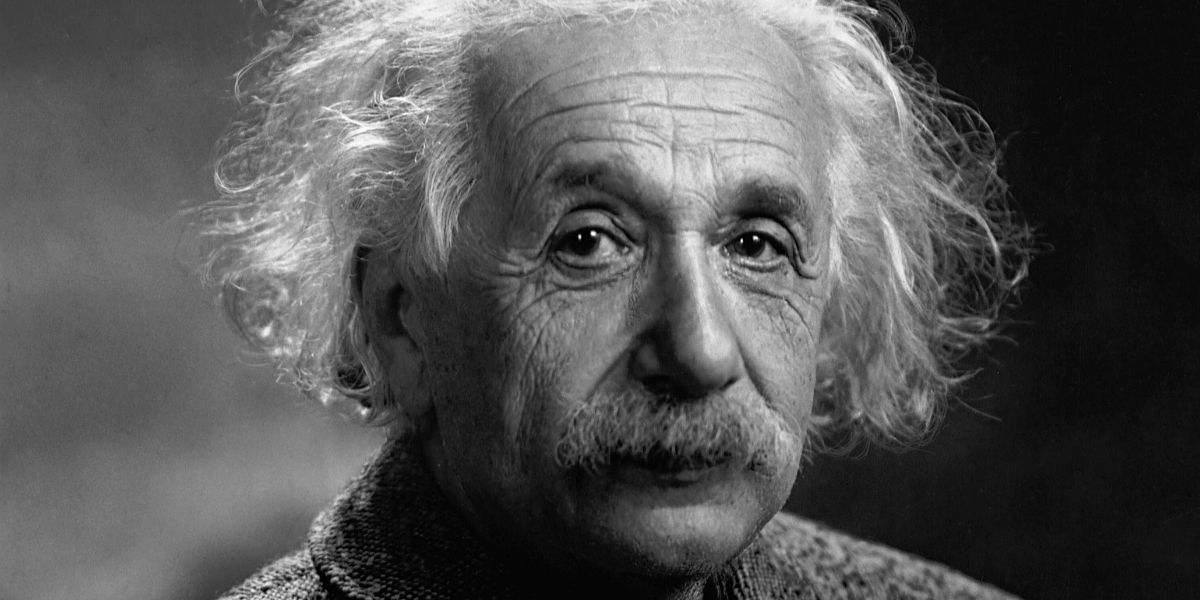
Doctor Who has returned to the historical format in "Demons of the Punjab," an episode that raises fascinating questions about human nature and the legacy of Western imperialism. New series writer Vinay Patel delivers a powerful, haunting tale that sees the Doctor and her friends explore Yaz's family history, and find themselves caught up in the horrific events of the Partition of India.
There are clear thematic and structural ties between "Demons of the Punjab" and "Rosa." Both episodes see Team TARDIS travel back to a point in time that's very personal to one of the crew - in this case, Yaz's. They wind up essentially being spectators, forced not to act against injustice so as to protect the timeline. This time, the Doctor is forced to betray her promise to protect everyone from the monsters, and instead she and her companions simply walk away as Manish confronts the true titular demons of the Punjab. "Rosa" was probably a little more effective, but it's still another powerful, deeply emotional episode.
Related: Doctor Who: Jodie Whittaker (Brilliantly) Undid A Matt Smith Promise
But, as with every episode of Doctor Who, there are questions left unanswered - whether about the historical setting, the monsters, or the Doctor's traditional name-dropping. And there are quite a bit this time.
- This Page: The Partition of India, the True Demons of the Punjab, and the Thijarians
- Page 2: What Are Doctor Who's Time Laws & What Are The Limits of the Doctor's Knowledge?
10) What Happened in the Partition of India?

The Partition of India was one of the defining moments in the history of Southeast Asia. There's a sense in which it was the logical consequence of the first two World Wars. On the one hand, India's profile had improved massively since World War I (it was a founding member of the League of Nations), and its populace had resented being taken into World War II without consultation. On the other, the two wars had left Britain bankrupted, and the British Government recognized that it no longer had the ability to maintain an over-extended empire. Violence began to escalate, and. in August 1946, the Great Calcutta Killing left 4,000 dead and 100,000 without homes. As mentioned in "Demons of the Punjab," Lord Louis Mountbatten was sent to India with a remit of ending the British Raj. Partition was his solution.
Mountbatten pushed for a speedy solution in which India was split into two countries, divided according to majority religions; India was majority Hindu, Pakistan majority Muslim. The new borders were approved on August 17, 1947, drawn up by a Boundary Commission that worked at speed and used out-of-date maps and census materials. Britain failed to factor in that people loved their lands as well as their faith communities, and, as a result, the violence simply got worse. "Demons of the Punjab" gives just a hint of the chaos that would follow; there were riots and mob killings, with mass migration on an unprecedented scale. It's estimated that anywhere between 200,000 to two million died in the aftermath of the Partition, with up to 100,000 women raped or abducted. The situation was particularly dangerous in the Punjab, which had a lot of former soldiers and weapons.
Related: Doctor Who Season 11 Is Fixing Tired Formula Problems
Doctor Who largely used this history as the background for "Demons of the Punjab," and, in fact, the narrative only ever spells out the bare bones of what's going on. Some critics have suggested that the episode could have gone into more detail, but it's worth remembering that Doctor Who isn't supposed to be an educational series. The historical context is important for the characters and themes, but you don't need to have an intimate knowledge of it to understand the story.
9) Who Was The Real Enemy in "Demons of the Punjab?"

It's become a common theme in Doctor Who season 11; this episode introduces an apparently fearsome alien race, the Thijarians, but they aren't the true villains. Rather, just as in "Rosa," the enemy is hatred and prejudice, bigotry and self-centeredness. In short, the Doctor and her friends are confronted with the true demon of the Punjab: human nature. They're drawn into the story of a Hindu woman who wants to marry a Muslim man, even as powerful political forces attempt to draw a dividing line between them. In one heart-wrenching scene, Prem reflects that there's "nothing worse than when people lose our minds. Our differences are more important than what unites us. Like we learned nothing in the War." It's hardly a coincidence that the BBC chose to air "Demons of the Punjab" on Remembrance Sunday, and there's even a beautiful glimpse of a field of poppies.
Related: Doctor Who: Who Is The Timeless Child?
The Doctor and her friends are figures of hope in the midst of all this, with the Doctor officiating the marriage - at the very border itself. She uses the sonic to bring that string of rope down, and it is then used to bind Prem and Umbreen together as part of the Hindu wedding ceremony. There's even a beautiful moment in which the Doctor expresses a rare aspect of her faith; "Love, in all its forms, is the most powerful weapon we have," she declares. "Becuase love is a form of hope, and like hopes, love abides in the face of everything." Meanwhile, Graham reassures Prem that there's only one thing you can do when hatred is all around you; you can choose to be a good man. There's something absolutely heartbreaking about that scene, especially given Graham knows enough to realize this marriage is doomed. This is the message of "Demons of the Punjab." Whether we win or lose, we must always fight for love against the tide of hatred. Where "Rosa" made the parallels to the present day explicit, "Demons of the Punjab" avoids doing so, leaving viewers to reach their own conclusions.
8) Who Are The Thijarians?

"Demons of the Punjab" introduces a brand new alien race, the Thijarians, who have an almost Cthulhu-like visage. The Doctor describes them as one of the Ancient Races, and the Thijarians themselves refer to following the waves of time; they're clearly time-travelers. But, while these aliens were once deadly assassins, tragedy has given them a fresh purpose. The destruction of their homeworld has taught the Thijarians the cost of war, and now they travel through time bearing witness to the deaths that history will forget, seeking to honor the lost. The concept is beautifully appropriate for Remembrance Sunday, especially when a brief flashback establishes that they visited the fields of WWII and stood vigil there. It's ironic that these apparent demons are essentially watching angels.
One unanswered question, of course, is, what happened to the Thijarian homeworld? There are two probable theories, really, and both are tied to the Time Lords. Gallifrey coveted the power of time-travel, and in its ancient days was a military power. It's entirely conceivable that the Time Lords themselves could have committed genocide in order to retain their position of cosmic supremacy. A second possibility is that the Thijarian homeworld was destroyed during the Time War. Entire worlds were erased from existence during that conflict - that was established back in season 1, when the Doctor encountered the Gelph in "The Unquiet Dead." The Thijarians could have been another victim of that conflict.
Page 2 of 2: What Are Doctor Who's Time Laws & What Are The Limits of the Doctor's Knowledge?

7) Does Anyone Even Believe the Doctor When She Says She Won't Interfere?
When Team TARDIS first arrive in 1947, the Doctor cautions them against interfering - after all, they're trampling over Yaz's family history. In spite of that, though, she can't help herself. Even when Prem finally goes to face his fate, she's offering to be at his side - clearly still hoping she can change history, and that the tragedy can be rewritten. There's something absolutely beautiful about this portrayal of the Doctor, a Time Lady who knows the risks she's taking, and yet desperately wants to confront any tragedy she encounters. An all-powerful time-traveler is once again faced with the fact that she must choose not to use her power, that she must choose to be a spectator and bystander rather than the fulcrum of history. And she resists this lesson with all her (not inconsiderable) might.
6) What Are The Laws of Time in Doctor Who?

Over the course of the last 50-plus years, Doctor Who has experimented with a lot of different models of the laws of time. In "Demons of the Punjab," the Doctor seems to suggest that history can be changed - and that, by wandering around in India in 1947, there's a very real risk Team TARDIS will inadvertently erase Yaz from time. It's the same model of temporal mechanics hinted at in "Rosa," where the villain believed he could make a subtle adjustment to history that would prevent the entire Civil Rights Movement happening in America. Doctor Who has really been fairly inconsistent in its approach to the pseudo-science of time-travel, but it's interesting to see season 11 demonstrate an unexpected new degree of consistency.
5) Is Graham the Most Important Member of Team TARDIS?

Graham seems to have become Team TARDIS's moral compass, and he plays a key role in both "Rosa" and "Demons of the Punjab." In the former episode, he had the heartbreak of being the one to ensure Rosa Parks was arrested in the first place. This time round, he gives stirring moral speeches to both Prem and Yaz. The latter seems to involve him channeling Ryan's grandmother, Grace, a beautiful touch that sees Grace's influence continue even though she died in the season premiere.
4) Has the TARDIS Developed a New Ability?

"Demons of the Punjab" kicks off with the Doctor using the TARDIS in a brand new way. She offers her ship a historical artifact - the broken watch - and happily declares that the TARDIS will be able to hone in on the "fragmentary temporo-spatial particles" upon it. As expected, the TARDIS is able to do this, and takes the Doctor and her friends back to just before a key event involving the watch. This is something the Doctor has never done with the TARDIS before, and it's an idea with so much potential. Imagine, for example, a plot in which the Doctor was dealing with an alien strike team from another planet; all she'd really need to do is acquire a sample of their technology, and she'd potentially be able to trace them back to their homeworld.
3) What Was The Killer Turtle Army?

It seems Doctor Who season 11 has skipped some pretty important stories - including one in which the Doctor, Graham, Yaz and Ryan wound up faced with an army of killer turtles. That particular adventure seems to have scarred Graham a little, although not enough to put him off traveling with the Doctor.
2) Wait, so the Doctor Officiated at Einstein's Wedding?

The Doctor has always loved name-dropping, and in "Demons of the Punjab" she claims to have officiated at (one of) Einstein's weddings. Albert Einstein married twice. In 1903, Einstein wed Mileva Marić, but the two separated in 1914 and officially divorced five years later. Einstein, then, wasted little time in marrying his first-cousin, Elsa Löwenthal. It's unclear which one of these weddings the Doctor was referring to, of course.
Related: Doctor Who Season 11 Is Rewriting The Doctor's Time Lord Backstory
1) What are the Limits of the Doctor's Knowledge?

There's one brief scene in which the Doctor describes the Thijarians as the deadliest assassins "in the known universe." Leaving aside the fact that she's underestimated the race's capacity for change, that comment is unusually specific; it suggests there is some sort of limit to the Doctor's knowledge of the universe, that there are portions of time and space that even she hasn't previously explored, and that perhaps the Time Lords themselves never knew existed. That definitely raises some exciting possibilities that the universe could be even more rich in wonder than Doctor Who has previously demonstrated.
More: Doctor Who Isn't Killing Its Villains - Is This The Secret Season 11 Arc?
from ScreenRant - Feed https://ift.tt/2QB178D


0 Comments